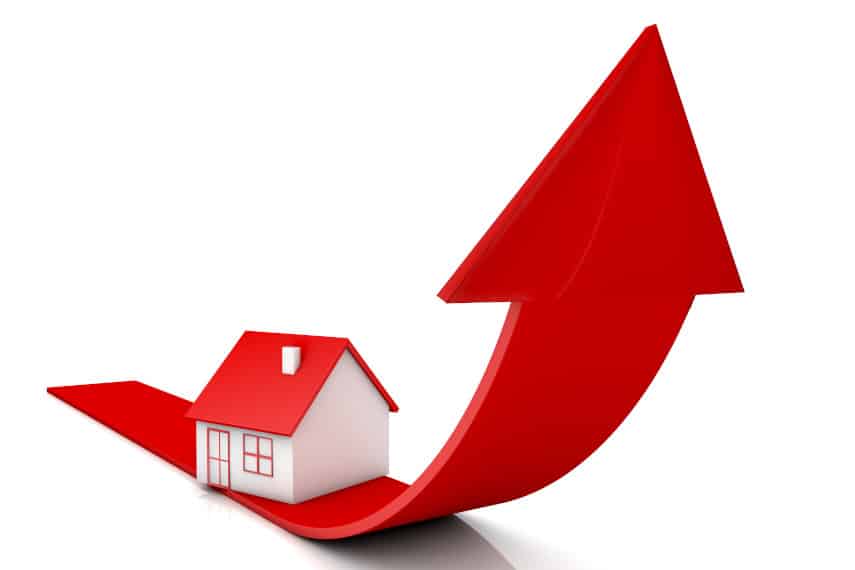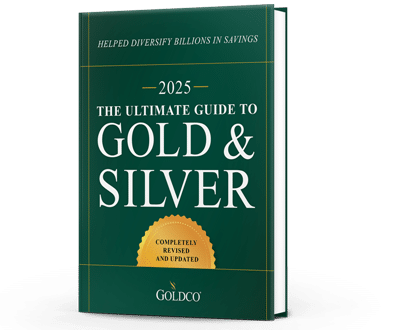6 Indicators of a Potential Recession
It seems that in the media today there are more and more mentions of the dreaded R-word: recession With growing economic uncertainty, the threat of potential recession seems to be growing as...
Economy

While fears of inflation are growing in the United States, inflation has shown itself to be a global phenomenon. One of the major areas of concern in the US is housing prices, which continue to rise and make home ownership even more unaffordable for those looking to buy a house. But the rise in housing prices, like other prices, isn’t just affecting the US – it’s a global issue.
Housing prices are rising around the world, from the US to New Zealand to Canada to Sweden, and the list goes on and on. Average housing prices around the world have grown over 7% over the past year, the fastest growth since 2006. That’s worrying, and has given rise to fears that we could be seeing yet another housing bubble.
Whether there is a bubble or not, there are five primary factors driving this rise in housing prices. But what everyone wants to know is how long these five factors will continue to drive prices upward.
It shouldn’t be any surprise that easy money is the primary driver behind rising prices, just as it is behind all price increases. We live in a world that, since 2008, has been absolutely flooded with money newly created by central banks. The only difference is that now, to combat COVID lockdowns, central banks are created as much money in a matter of weeks or months as they used to create over a period of years.
One of the tools by which central bankers have traditionally pushed money into the financial system is through manipulation of interest rates. By purchasing assets on the open market, more money is being pushed into the financial system, which lowers interest rates. And with the amount of money that has been created over the past several years, interest rates continue to be suppressed to well below natural rates.
When interest rates are low, people want to borrow money. After all, buying a house with a 3% interest rate mortgage is a lot cheaper over 30 years than with a 10% interest rate mortgage. But with so much money in the system, it also incentivizes people who really aren’t financially able to afford a mortgage to jump into the market. And banks aid and abet those people because there is so much money out there and they need to lend it out to make money.
That was behind the creation of the mid-2000s housing bubble, and it continues to be a driver of housing demand today. We won’t find out until after the bubble bursts, however, just how bad it was and how many people really shouldn’t have been buying houses.
The 2008 financial crisis led to a number of foreclosures, as many homeowners decided to walk away from their mortgages. All of a sudden there was a glut of houses on the market. Prices dropped significantly in many areas, and many new homeowners were able to take advantage of those prices. But so were institutional investors.
Thanks once again to the easy money created by the Federal Reserve, institutional investors were able to take advantage of cheap borrowing costs to buy houses that they would then rent out. Some institutional landlords today own tens of thousands of single family homes. These are homes which are now off the market and won’t be available for sale in the future, thus restricting the supply of potential houses on the market and raising housing prices.
The more easy money is created, the more houses institutional investors can buy. And thus the housing crisis worsens as individuals looking to buy houses with a mortgage lose out to institutional investors who can pay all cash. If this trend continues and the amount of single family homes owned by institutional owners continues to grow, many of those looking to live in a house will have no choice but to rent rather than to buy, since the supply of houses will be locked up on the balance sheets of mega-corporations.
The global movement of capital has also led to the ability of foreign investors to purchase houses in domestic markets. Both Canada and the US have seen interest from foreign investors, often from China. Those looking to protect their wealth from appropriation by the Chinese government in many cases protect their assets by buying houses outside China, giving them not just a safe haven, but also a place to live when they need to flee. But in some areas, the interest from foreigners has skewed real estate values, while infuriating locals who see houses sold and remaining empty.
This again is a trend driven in part by easy money, which has benefited the rich who own and benefit from investments in financial assets, while working class individuals get left behind. That doesn’t engender any warm feelings between new foreign homeowners and the locals who can no longer afford to live where they always have.
Many of us are familiar with new trends that have begun in the aftermath of COVID. Those who have the means have begun fleeing cities and are moving to suburbs or rural areas, even moving across the country to take advantage of cheap real estate prices and the ability to work from home. That has led to housing prices rising in many rural areas, pricing out many locals.
It’s unclear how long this trend will continue, or if we’ve already seen the peak. But there’s no denying that COVID-related migration is roiling real estate markets across the country, and even around the world.
As many real estate investors and developers like to say, “they’re not making land anymore.” With growing populations around the world, and growing immigration to the West, the number of people looking for a place to live continues to grow all the time. More people plus a fixed amount of land means that the natural trend will be for house prices to rise over time. That’s an unfortunate side effect of population growth, but one that can’t be helped.
Many younger Americans are afraid that they’ll never be able to afford the same lifestyle their parents had. While Baby Boomers may have been able to buy a singe family house for 3-4 times their annual salary, millennials are looking at having to pay 10-12 times their annual salary for that same house.
For older Americans, they see that as vindication that their decision to buy a house was a good investment decision. A house is the single largest purchase most households will make, and for most households provides the largest single source of household wealth. But is a house really such a great investment?
Let’s compare an investment in a house to an investment in gold. In 1971, the median sales price of a house in the US was $24,300, or roughly 700 ounces of gold. In 2000, that median sales price was $165,300, or roughly 550 ounces of gold. Today, that median sales price is $347,500, or about 185 ounces of gold. That’s a pretty convincing argument that trusting gold as an investment would have been better than buying a house.
Fear of missing out on a house is one of the biggest drivers behind continued demand in the housing market today despite the high prices. Many prospective buyers believe that owning a home is a good investment. But if they actually crunch the numbers, they might find that waiting a while for just the right house and investing their money elsewhere in the meantime might be better for them financially.
For those looking for investment alternatives to stocks and bonds, gold and silver are always among the favorites. Their ability to maintain their value over time is proven, as the example above demonstrated. And their performance during times of crisis, such as during the stagflation of the 1970s or in the aftermath of the 2008 financial crisis, is similarly proven.
If you’re worried about rising prices in the economy and looking to protect the purchasing power of your savings, maybe you should start thinking about gold and silver. Call the experts at Goldco today to learn more.

